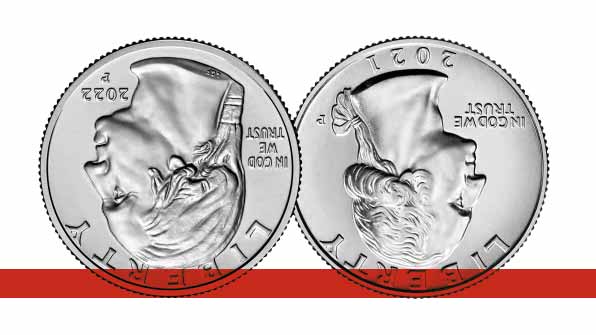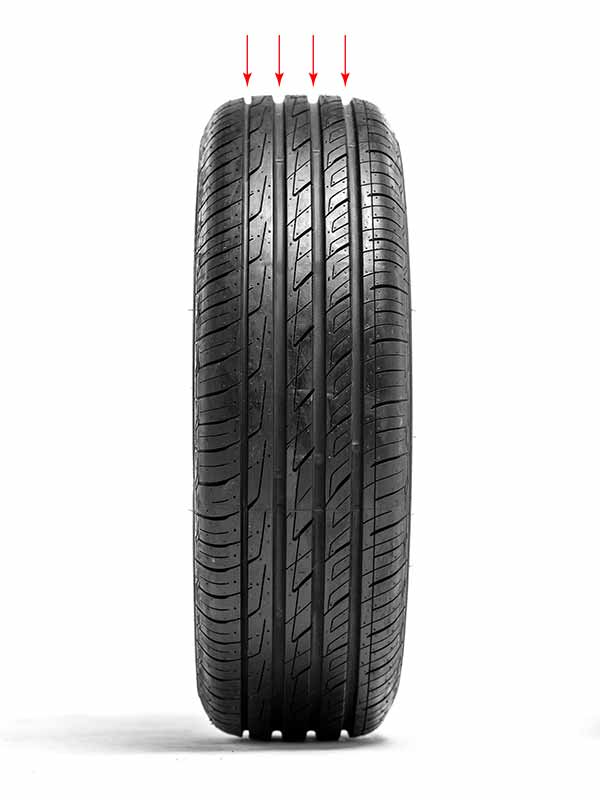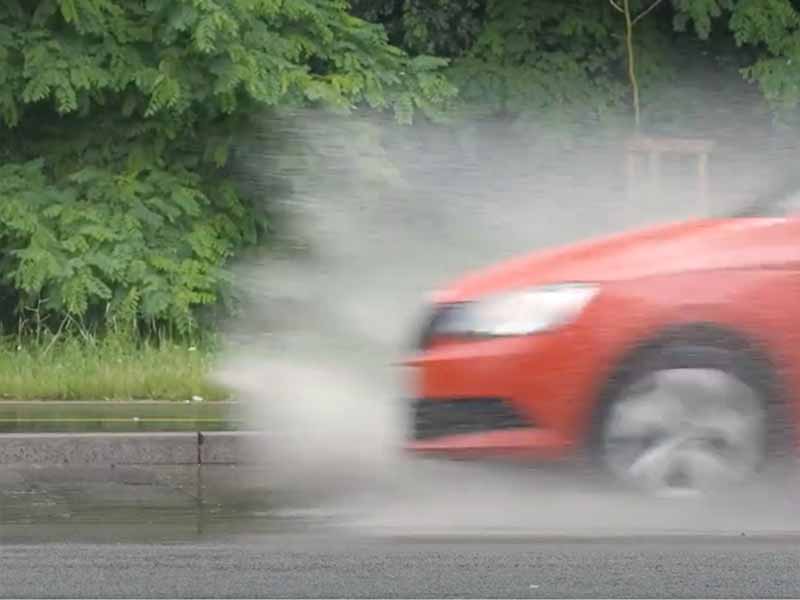Picture this: You’re cruising down the highway, rain pelting down, windshield wipers swishing back and forth, when suddenly you see brake lights up ahead. You hit your brakes, but your car doesn’t stop as quickly as it should. Your heart leaps into your throat as you skid towards the vehicle in front of you.
Scary, right? It might surprise you to learn that the depth of your tire tread could be the difference between a close call and a fender bender. So, how can you tell if your tire tread is up to snuff? Grab a quarter and keep reading.
How To Test Tire Tread Depth With A Quarter
To test tire tread with a quarter, insert it into the tire groove with Washington’s head pointing down.
If the top of Washington’s head is covered by the tread, you have at least 4/32″ of tread depth left, which is considered safe.
If you can see all of Washington’s head, your tread is less than 4/32″, and you should consider replacing your tires, especially if you frequently drive in inclement weather.
In this article, we’ll cover the importance of tire tread depth and its effect on your vehicle’s performance and safety. We’ll also walk you through how to check your tire’s tread depth using both a penny and a quarter, helping you understand which coin test is more effective. Plus, we’ll dive into the impact of tread depth on stopping distance, and discuss when it’s time to replace your tires.
Let’s take a closer look.
The Quarter Test
Alright, grab a quarter from your coin jar, and let’s get to work. The quarter test is a quick, simple way to estimate your tire’s tread depth.
Here’s how to do it:
- Take a quarter and hold it so you’re looking at Washington’s head. That’s right, we’re upgrading from Abe to George this time!
- Insert the quarter into one of the tire’s tread grooves with Washington’s head pointing down.
- Check to see if the top of Washington’s head is covered by the tread. If it is, then you have at least 4/32″ of tread depth left. If you can see all of Washington’s head, then your tread is less than 4/32″, and you should start considering getting new tires, especially if you drive in rain or snow.

Comparing the Quarter Test to New Tires
What’s the difference between the tread depth of my current tires and new ones? New tires typically have a tread depth of around 10/32″ to 11/32″. So if you’re doing the quarter test and finding that Washington’s head is just barely covered, your tires have worn down quite a bit from when they were new. Remember, the lower your tread depth, the less capable your tires are at maintaining traction, especially in inclement weather.
The Importance of Tire Tread
First and foremost, tire tread is all about keeping your vehicle grounded. Those grooves in your tires aren’t just for show. They’re designed to maintain traction with the road. You don’t want to be driving, especially in inclement weather, with slick tires.
When it rains, the tread on your tires channels water away from the center of the tire to prevent your vehicle from hydroplaning. In the snow, the tread bites into the slippery surface, helping you to stay on course. Simply put, a good tread depth is the difference between maintaining control of your vehicle and sliding around.
How Worn Tires Impact Your Drive
We’ve all been there—pushing our tires just a little bit longer to save a buck. But did you know worn tires can significantly affect your stopping distance? Here’s a little science for you:
- With 2/32″ tread depth (which is the minimum legal limit in many states), your stopping distance could be doubled compared to new tires, especially on wet roads. That’s like missing a basketball hoop by twice the hoop’s height—kind of a big deal when safety is on the line!
- If your tires are at 4/32″ tread depth, you’re faring a bit better, but you’re still not in the clear. Your stopping distance is notably longer than that of new tires, and you might find your vehicle sliding in heavy rain or snow.
- Now, consider 10/32″ tread depth. This is often the tread depth of new tires. With this depth, you’ll have maximum traction and the shortest stopping distance. That’s the sweet spot for tire performance and safety!
As your tire’s tread wears down over time, your ability to maintain traction and stop promptly is compromised.
When to Replace Your Tires
Now, let’s tackle the big question: When should you replace your tires?
The Minimum Legal Tread Depth
First off, there’s the legal minimum to consider. In many states, the minimum legal tread depth is 2/32″. If your tires are worn down to this point, they’re considered legally worn out, and it’s time to replace them. However, as we’ve discussed, the performance of your tires in inclement weather can start to deteriorate before they reach this point.
The Quarter Test Indicator
That’s where the quarter test comes in. If all of Washington’s head is visible when you do the quarter test, it means your tread depth is less than 4/32″. At this point, it’s a good idea to start considering new tires, especially if you frequently drive in wet or snowy conditions. Remember, as your tire’s tread depth decreases, so does your vehicle’s ability to maintain traction and stop quickly.
Other Factors to Consider
But tread depth isn’t the only thing to consider when determining whether to replace your tires. Other factors like tire age, damage (like punctures or bulges), or uneven wear can also mean it’s time for a new set.
For example, even if your tires have plenty of tread depth left, if they’re older than six years, they might need to be replaced. Why? Over time, the rubber in tires can harden and become brittle, reducing their ability to grip the road.
Similarly, if your tires have any damage—like a puncture that can’t be safely repaired, a bulge, or a large crack—it’s time to replace them, regardless of the tread depth.

Resources
Below are some links you may find helpful when learning about tires
- The quarter test – Colorado Department of Transportation
- Why you should use a quarter to test tire tread instead of a penny – Lifehacker
Final Thoughts
We’ve covered a lot of ground in this article, but if there’s one thing we want you to take away, it’s this: the depth of your tire’s tread can significantly impact your vehicle’s performance and safety, especially in wet weather. Regularly checking your tread depth isn’t just a good practice—it’s crucial to maintaining a safe ride.
Remember, you can use a quarter to quickly check your tread depth, providing a timely warning of when it might be time to consider new tires. But don’t forget to also keep an eye out for any damage or signs of aging. And when it’s time to replace your tires, don’t hesitate. The safety of you and your passengers could depend on it.
Good luck and happy motoring.




